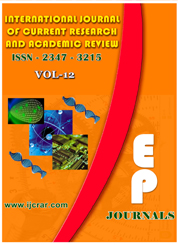Abstract Volume:12 Issue-1 Year-2024 Original Research Articles
 |
Online ISSN : 2347 - 3215 Issues : 12 per year Publisher : Excellent Publishers Email : editorijcret@gmail.com |
Papaya is one of the healthiest fruits, rich in antioxidants, polyphenols, and vitamins C and A. On the other hand, papayas are larger fruits that are more difficult to transport and are more perishable because of their high free water content and potential for microbial infection. To overcome this problem, various studies have been undertaken on different papaya drying processes. Therefore, this review aims to assess the research that has been conducted on drying methods and identify the best nutrient retention methods among driers. Drying methods such as solar (direct and indirect), oven (hot air), microwave, refraction window, and freeze dryers are the most common. Moreover, the nutritional quality of papaya depends not only on the drying methods but also on the thickness of the papaya slice or purée, the drying temperature, and the time. The most valuable nutrients of papaya, beta-carotene/provitamin A, lycopene, and vitamin C are better retained by a freeze dryer followed by a refractance window; hence, the nutrients are heat-liable. Instead, phenols and flavonoid nutrients are more retained by heat-driven dryers through the release of polyphenolic compounds from the food matrix during drying; hence, heat breaks down covalent bonds and facilitates the liberation of bio-compounds. The refractance window dryer is the most promising papaya drying technology over the freeze dryer because it uses less energy, is easier to use, is more environmentally friendly, and retains more nutrients than previous drying methods.
How to cite this article:
Masresha Minuye. 2024. Papaya Drying Methods and it’s Nutritional Value.Int.J.Curr.Res.Aca.Rev. 12(1): 51-60doi: https://doi.org/10.20546/ijcrar.2024.1201.006



Quick Navigation
- Print Article
- Full Text PDF
- How to Cite this Article
- on Google
- on Google Scholor
- Citation Alert By Google Scholar
